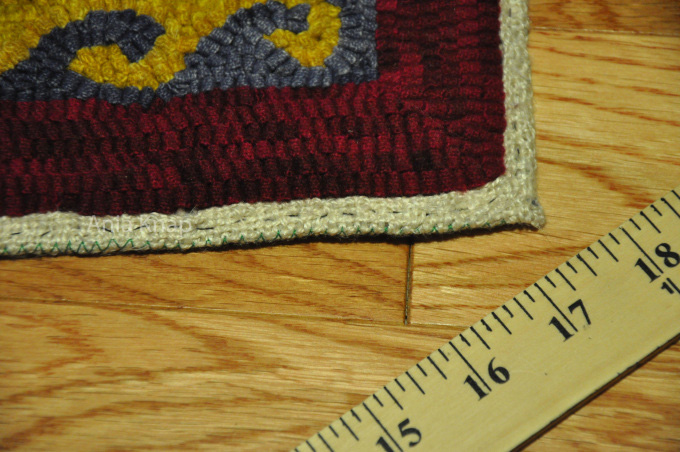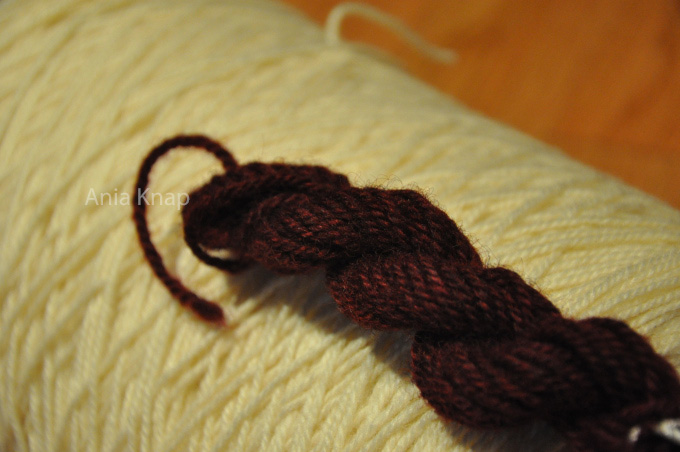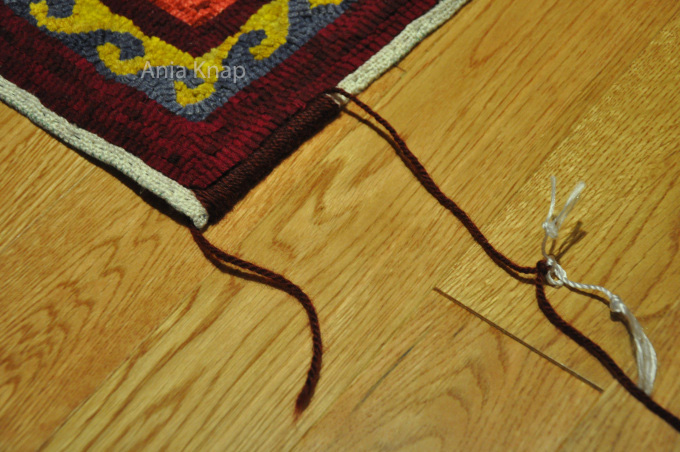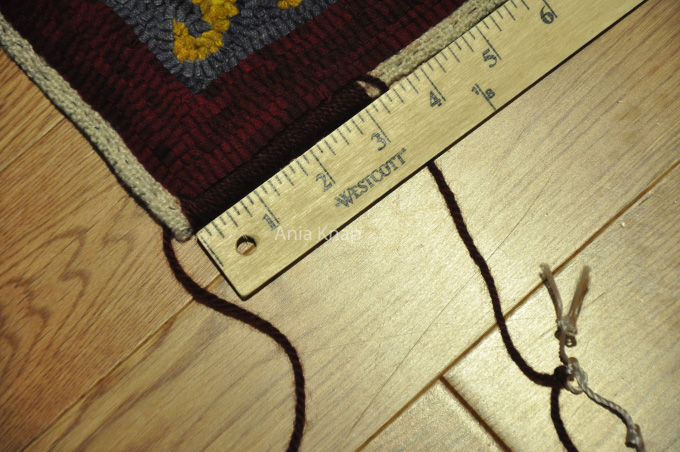Last month Ania spoke about the first scroll in her “Missing Scrolls” project. This month, she’s talking about the second scroll. The second scroll is featured in the middle of the pattern, and was hooked in #3 cut wool. The pattern was designed by Jane McGown Flynn, and is 22″ x 11″. You can also read about the background on the project as a whole in that first blog post, available here.
Scroll on below to see more images of the completed “Missing Scrolls” project, and to read about the completion of the second scroll:

How did you approach color planning for the center scroll?
I dyed all of the wool for this scroll, and I had to preplan how I was going to hook it. It was hooked with dip dyed wool, where each piece of wool was dyed to run from the lightest to darkest color.
I decided on three different dip dyes, and I settled on including the apricot, green, and blue featured at the tip of each scroll because those wool colors are no longer available for purchase. Once I decided on the colors I would use, the planning was pretty straightforward, because I used each color in a simple pattern – I hooked a blue scroll, and then an apricot scroll, and then a green scroll, and then back to blue and so on.

What was the biggest challenge with hooking this scroll?
This scroll was very labor intensive. When I was still in the planning stages, I had to hook the longest scroll from it’s tip to it’s bottom to determine how much wool I needed to dye for each of my dip dye pieces. Dyeing dip dye wool itself is also pretty labor intensive.
The biggest challenge though, was this scroll really wanted to go on its own journey for what it would look like. I needed to loosen my conscious control over what the finished pattern would look like. Once I decided on the order of the colors to hook, the scroll really developed on it’s own. All I had to do was pull the loops. I had to let the scroll take the lead on the journey!

Is there anything else you’d like to note about this scroll?
The background is hooked in a checkerboard with a spot dye. I had seen this background done in a floral pattern in a rug that Jane McGown Flynn had in the rug show. Jane’s finished background was in green, and it looked like velvet, which I thought was beautiful. I was curious how the same technique would look with a spot dye wool. I think it came out really nicely.
As always, if you have any questions or comments, please leave them in the comments below!
























